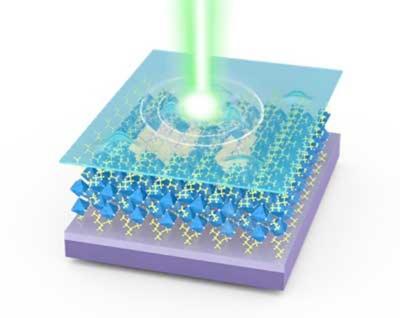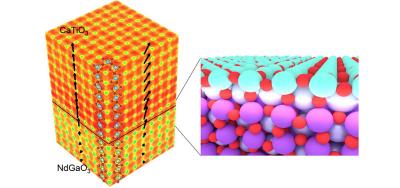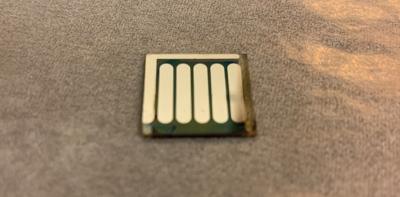NUS team harnesses the properties of 2D perovskites for ultrathin optoelectronic applications
NUS scientists have found that the light emission properties of molecularly thin two-dimensional (2-D) hybrid perovskite can be tuned in a highly reversible way for ultrathin optoelectronic applications. A highly efficient photodetector has been fabricated using hybrid perovskites with the thickness of a single quantum well.
 An impression of laser interaction with a molecularly thin 2D perovskites encapsulated by hexagonal boron nitride (blue layer). (Image: NUS)
An impression of laser interaction with a molecularly thin 2D perovskites encapsulated by hexagonal boron nitride (blue layer). (Image: NUS)
Each basic unit of a 2D hybrid perovskite is constructed using a semiconducting layer of inorganic material sandwiched between two organic insulating layers. While researchers have studied layered perovskites in their bulk form for many years, the properties of these crystals when their thickness is thinned down to a few and single layers have largely not been explored.



